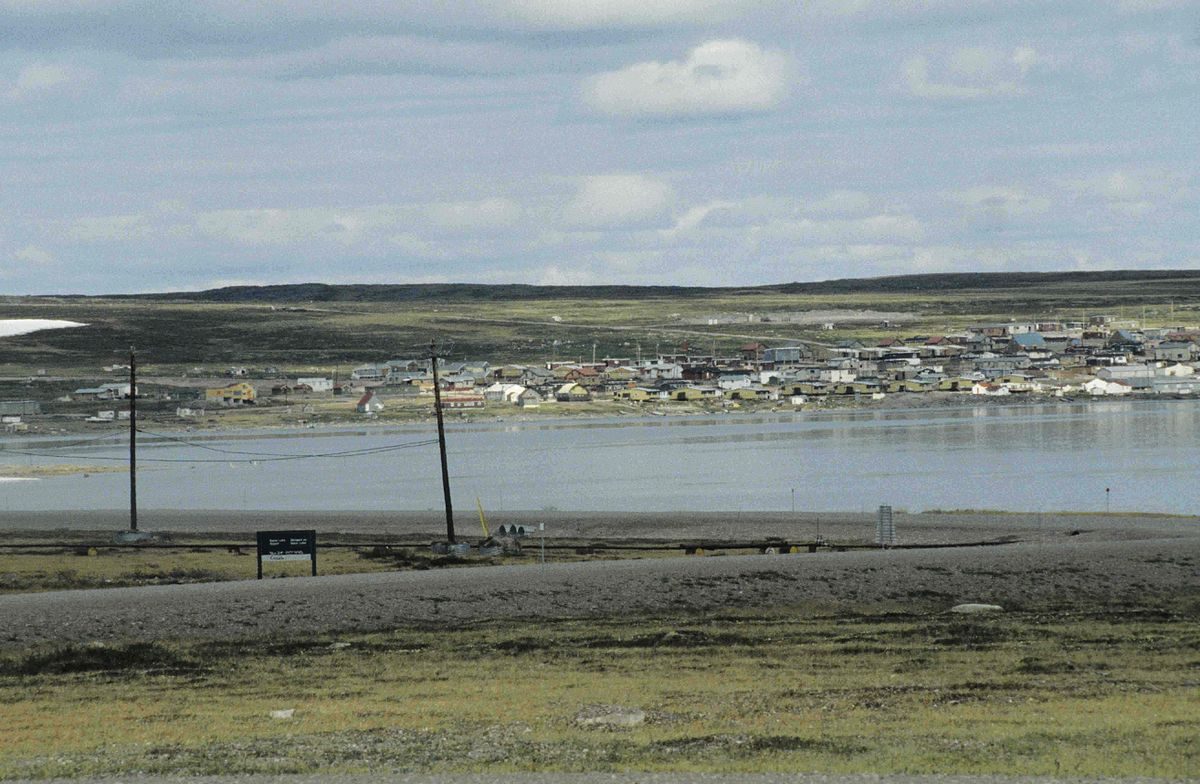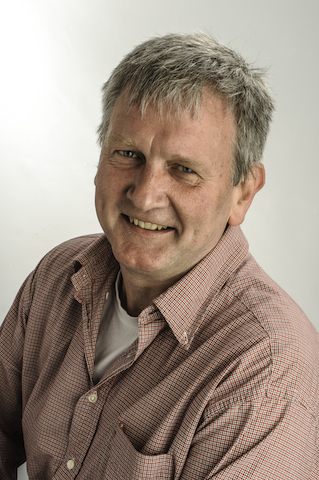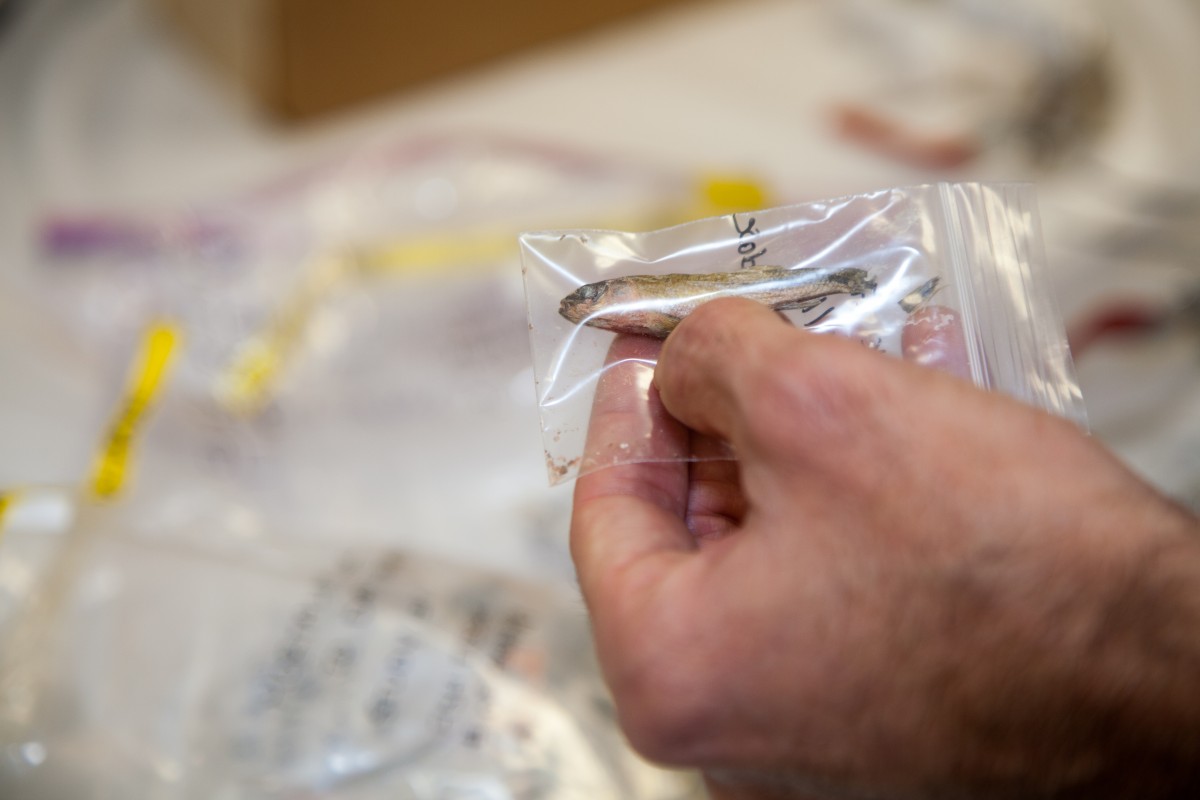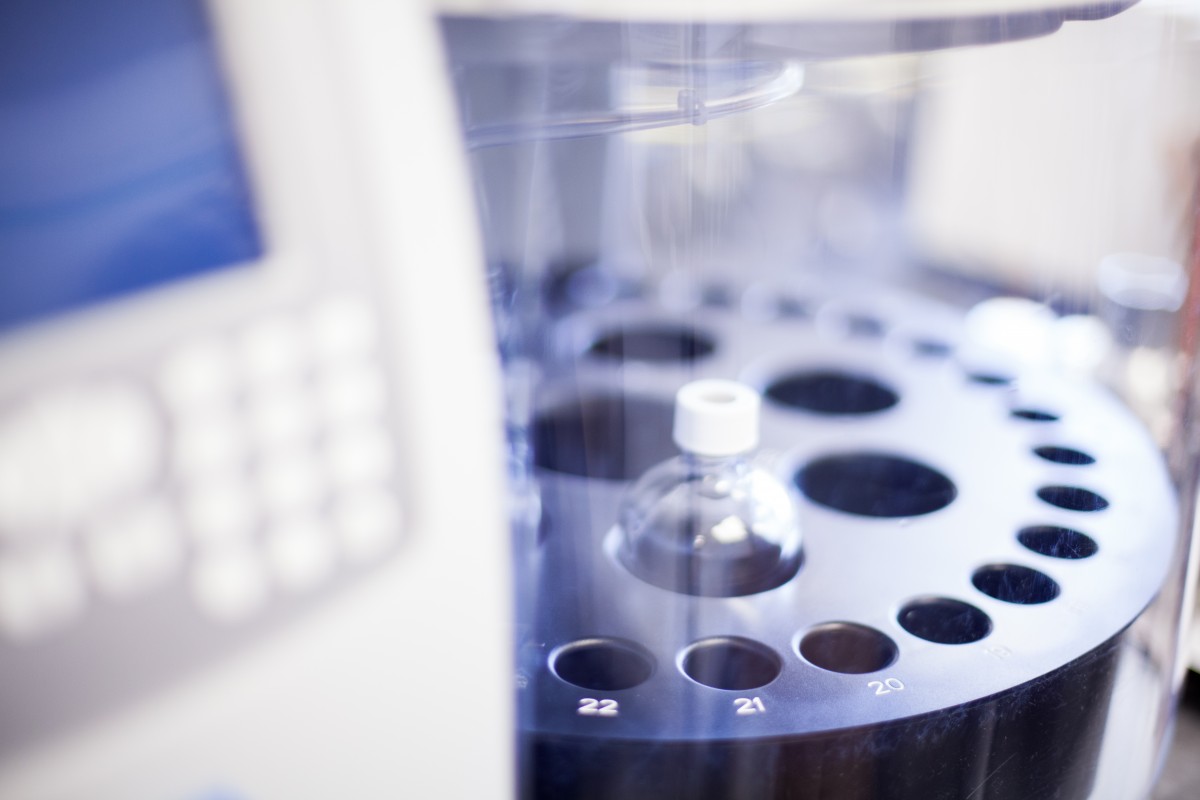
Baker Lake. Photo credit: wikipedia/commons
U of M chemists & Inuit collaborate to track biodiversity in Canada’s North
When you first meet U of M Chemistry Professor Jörg Stetefeld, it’s obvious that he’s what you might call a “people person”. It’s a good thing, too, since that quality served him well when it came to forging a unique partnership between the University of Manitoba and a community of indigenous people in Baker Lake, Nunavut. Known as the Kivalliq Inuit Association (KIA), the group’s mission includes the protection of Arctic wildlife and the environment, with a view to preserving traditional usage for current and future generations.
The Stetefeld team initially went to Baker Lake to seek out new monitoring opportunities for the Centre for Oil and Gas Research and Development (COGRAD). A state-of-the-art accredited testing facility at the UofM, COGRAD is committed to bridging the gap between academia and industry in the fields of analytical and environmental chemistry, and using industry partnerships to develop new tools to monitor bodies of water and the creatures that call them home.
“[Co-founder] Gregg Tomy and I started COGRAD in 2014, and the original idea was to look at pipelines where they transport crude oil and do environmental monitoring for certain chemical compounds called PAH or PACs (polycyclic aromatic hydrocarbons). But when we went to these places, many people approached us and said ‘why aren’t you doing more biodiversity screening?’
“We had arrangements with gold mines and [the Inuit] in this area. We went there to take samples from lakes and characterize for and with them the nature of biodiversity there, how habitat is changing due to mining activities – these kinds of things.”

Jörg Stetefeld
The vast area involved in Stetefeld’s screening is overseen by Luis Manzo, K.I.A.’s Director of Lands. The two men met at a research consortium put on by the University of Manitoba and Fisheries and Oceans Canada.
It was that same workshop where Stetefeld presented a new eDNA metabarcoding system for understanding biodiversity. Metabarcoding involves taking samples from surface water, sediments and soil and isolating the DNA within them. The DNA is then extracted and sequenced, which results in the base codes of the material.
The data collected via this method will allow Stetefeld to inform the Inuit at Baker Lake not only what state their environment is currently in, but to predict what will happen to it in the future. The goal is to add to and enhance traditional Inuit knowledge, which Stetefeld’s team currently relies on since “… they know much better than we what’s in their backyard.”
On a visit to Stetefeld’s lab, Manzo discovered the researcher was in need of more equipment for his work, as well as support for a funding application. Coincidentally, K.I.A. was conducting a review of a second mine project at Central Baker Lake and needed scientific data and tools to assist them in fulfilling their responsibilities under the Nunavut Land Claims Agreement.

Gregg Tomy
“It was the perfect opportunity to share information and expertise in the area of water quality and eDNA to identify biodiversity around the mine site (the Whale Tail project).”
It was at that point that K.I.A. decided to enter into a cooperation agreement with the UofM. This allowed the group to use funds from their water compensation agreement with the mining company.
It was Manzo’s idea to combine traditional Inuit methods of resource management with the scientific methods offered by Stetefeld’s team in a program known as One Voice. Manzo says that it has taken over three years to develop, with members fine-tuning the basic methodology required to compare data gleaned through traditional methods and the use of modern technology. Manzo isn’t shy when it comes to praising K.I.A.’s new partners, either:
“Dr. Jörg and Dr. Matthew [McDougall) have been very helpful in supporting [our] ideas and all the work that needs to be done. We’re hoping to continue working in the areas of caribou eDNA information, water quality information and biodiversity information. Also, in the area of GIS [Geographic Information System], we are planning a new web mapping application to display all the information collected to the public. Kivalliq Inuit Association will continue the cooperation agreement to make sure the two institutions help each other. Dr. Jörg’s team is the most proactive team I’ve ever come across in my professional career.”
Stetefeld is happy that things have gone so well to date with K.I.A., as he knows full well that relations between outside agencies and Indigenous groups have not always proven successful.
“Usually there is some kind of hesitation … They say: ‘What can you tell us that we don’t know already? The weather is changing. The climate is changing. Our fish are looking different.’ But we try to say: ‘Come on, let’s do this together to understand more details, to predict things to tell you whether the water is safe to drink, is the fish safe to eat?”
Between Stetefeld’s forthright, friendly manner and the willingness of K.I.A.’s membership to find new ways to protect their lands, a new model of cooperation has emerged. In February, four members of Manzo’s department visited the UofM for training in scientific monitoring methods. Stetefeld is hoping this will allow the Inuit to generate and track their own environmental data.
“We offered them the first eDNA workshop here in the labs where we trained them. We said ‘This is how we take samples, this is how we extract the DNA, this is how you amplify these basic steps.’ Because at a certain point we want them to do this on their own. They’re extremely smart, and they’re very eager to learn it. They’re really great people. It was really a highlight.”
Stetefeld has built a relationship based on trust as well as the realization on K.I.A.’s part that the university’s interest is not in gaining access to their resources. He knew going in that the Inuit are wary of past industry partners who have been focused simply on mining their gold deposits.
“We are a university and we want to work together. As for the future, we are already in discussions with the Dean’s office. For example, [K.I.A.] has asked us now ‘Would you be willing to offer online courses for Extended Education? Would you be willing to help us set up a database?’ We have tons of data over many, many years of monitoring, but we want to make this public, so that everyone can have access to it and put their own things in and make this a really vibrant kind of system.”
A recent visit to Ottawa’s Senate presented Stetefeld with a chance to explain the One Voice collaboration to a group of senators, in the hopes of recreating its success elsewhere. Stetefeld feels this type of project is unique in Canada, an impression that was reinforced by the senators to whom he presented, as they had never heard of a similar initiative. Stetefeld acknowledges that Canada is a vast country, so there might be another collaboration like it out there.
While pleased to have had the opportunity to highlight the program, Stetefeld is concerned that governments at all levels are more focused on the benefits of industries that bring jobs to the area, as opposed to preserving the environment in the North.
“This is one of the largest water resources on Earth. It’s very sensitive, and it’s a treasure we have to protect for our children.”

COGRAD Lab samples. Photo credit: Kira Koop.

Pegasus GC-HRT 4D. COGRAD Lab. Photo credit: Kira Koop.

COGRAD Lab. Photo credit: Kira Koop.

COGRAD Lab. Photo credit: Kira Koop.
For Stetefeld, it’s a project whose time has come. He particularly appreciates the support given by the Faculty of Science, Dean Stefi Baum and Associate Dean Peter Loewen, and is thrilled to see the next generation of researchers “catching fire” as a result of his interaction with One Voice.
“We get highly motivated undergrad students who want to do projects with us or go up [to Baker Lake] to collect samples. Also, COGRAD itself works with big analytical labs all over Canada. We asked them to come onboard, [which] required them to be competitive in the work place. Then we [work] to make the students ready for the job market. It’s a nice thing.”
The other “nice thing” for which Stetefeld is hoping is to build a solid standing for One Voice in the scientific and industrial communities:
“If the collaboration works and if we produce really good scientific data that we can publish, we build a reputation and then we can go for grants and the hope would be in other projects like in the Experimental Lakes Area where they have fairly well-equipped laboratories where you can do these things. The hope would be in the Baker Lake area that we build this in a similar way.”
Related News
Feds support an environmental DNA laboratory at U of M : News
Riding the wave: COGRAD’s research into safeguarding our water : Network News
Research at the University of Manitoba is partially supported by funding from the Government of Canada Research Support Fund.






